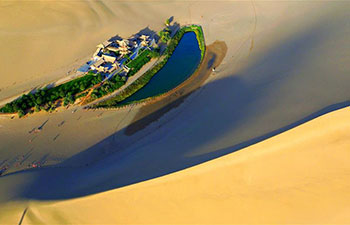LOS ANGELES, Aug. 30 (Xinhua) -- Several instruments and spacecraft from NASA's Jet Propulsion Laboratory (JPL) in Pasadena, California, have eyes on Hurricane Dorian, capturing different types of data from the storm, according to the latest release of JPL.
In an infrared image of Hurricane Dorian, captured Thursday afternoon by NASA's Atmospheric Infrared Sounder (AIRS) aboard the Aqua satellite, the large purple areas are cold clouds, carried high into the atmosphere by deep thunderstorms. Blue and green show warmer areas with less rain clouds, while orange and red represent mostly cloud-free air.
NASA's CloudSat satellite provided a 3D animation after passing over Dorian, which was still a tropical storm at the time, near Puerto Rico.
CloudSat uses an advanced cloud-profiling radar that "slices" through clouds, enabling scientists to see their height, their different layers and the areas where the heavier bands of rain are found within the storm system, according to the JPL.
The animation shows Dorian when it had maximum sustained winds of 84 km per hour with some cloud tops extending about 15 km into the atmosphere.
NASA collects data from space, air, land and sea to increase understanding of Earth, improve lives and safeguard human future.
Launched into Earth orbit in 2002, AIRS and the Advanced Microwave Sounding Unit (AMSU) provide a 3D look at Earth's weather and climate.

















